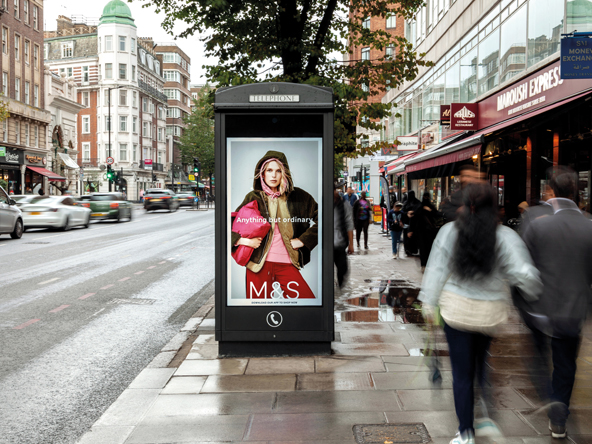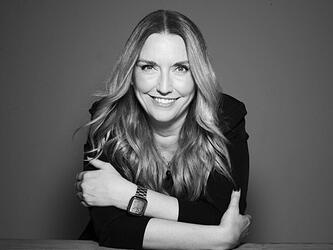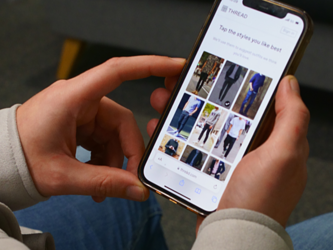Out of the ordinary: How insight helped M&S define its customer

The greatest strength of Marks and Spencer (M&S), widely regarded as the bellwether of the British high street, has arguably been its greatest weakness too: everyone knows it, nearly all households shop in it, but it has historically tried to be all things to all people. For example, around 22 million people – nearly one third of the UK population – shop for clothing and homeware at M&S every year. Some of them, however, do so only once.
M&S is in the middle of a turnaround programme designed to make itself more relevant to more people – and, crucially, to persuade customers to shop with it more frequently and across its considerable range. This has involved addressing perceptions that while the food is fabulous, clothing – and to a lesser extent its homewares – is dull. The retail sector took a battering during the pandemic lockdowns of 2020, but M&S capitalised on the sharp drop in footfall by focusing more closely on its turnaround strategy. Nowhere was this attention more important than in customer insight, which embarked on its own transformation in the spring of 2020.
Paul Burditt, consumer insight manager in clothing and home (C&H), explains: “We had more time to think very carefully about how we were structured and what our roles should be, in order to contribute in the most effective way to helping the business to develop its strategies to meet the objectives of the overarching five-year plan.”
The new customer insight team for C&H launched at the beginning of 2021 and embarked on a programme that has put insight at the heart of the business and strategy, which, in turn, has allowed M&S to accelerate its programme of change.
The team has approached this through a combination of work to determine what customers want from C&H, and defining what it describes as the ‘modern mainstream target customer’. They worked hand-in-glove with the C&H managing director, leadership team and business units (for example, womenswear, menswear, childrenswear, lingerie, beauty, home and dot.com) to embed insight into everyday decision-making at all levels.
Burditt joined M&S during the second week of the first lockdown in early 2020. Reporting to head of customer insight Tamsin Robertson, he leads all the retailer’s primary and secondary research, as well as trends, predictions and forecasts. “I’d regularly be asked ‘how’s this bit of the lockdown going to play out in terms of customer behaviour and intentions?’ and would find myself mining government legislation to try to unpick what on earth was going on,” he recalls. Three colleagues head up data insight, strategic market insight and category insight, with three others supporting with analytics, ad hoc and voice-of-the-customer research, and internal communications.
The clothing and home and food divisions are almost two separate businesses at M&S. “Shoppers have different missions, mindsets, frequency and attitudes when they’re shopping for each,” explains Burditt. Nevertheless, one of the new insight team’s first major pieces of research was a joint ‘state of the nation’ project with food, aimed at gaining a definitive understanding of some key customer trends. First conducted in 2021, and updated in 2022, it yielded valuable insights about how customer behaviour is changing.
“One trend was an acceleration in confidence with omnichannel,” says Burditt. M&S was slow off the mark when it came to online shopping, but upped its game rapidly during the lockdown. “Our customers, regardless of age, are shopping in an omnichannel way, and we have to be there for them at all the different touchpoints,” he continues. “They come into the stores to get ideas and they love the physical shopping experience, but they also value the convenience, speed, and sheer range and volume of stuff they can get online.”
However, Burditt acknowledges that the trade-off between convenience and privacy might tip in favour of privacy ‘in a year or two’ as consumers start asking to be ‘left in peace’ – by brands as well as government and institutions. He notes that people are currently shopping more in store and using cash in order to keep a careful eye on what they spend.
Other trends include a greater desire to shop locally – reinforced by rising petrol and transport costs – and to be part of a community. People continue to crave ‘wellbeing’, whether through exercise or cocooning.
“We also saw (and continue to see) people seeking simplicity – and that is playing out in clothing,” he says. “People are buying fewer clothes but want durability and versatility, and they are looking to retailers for ideas and inspiration to help them achieve that.”
This particular insight was reinforced in a separate major research project, also in 2021, which identified eight key customer priorities that formed the basis of the three-year plan for C&H. Not only did the C&H managing director and leadership team sign these off, but they have also planned in significant time every month to ‘talk all things customer insight’ with the insight team, says Burditt. “That director-led immersion in what the customer wants, and how that plays out in the business, is really important in keeping customer-related discussions live,” he adds.
The discussions also inform strategy development at an individual business unit level, every season, he explains. “Our market and consumer insight influences their buying, merchandising and marketing strategies, and ensures they keep the customer at the heart of their plans.”
There’s certainly plenty to talk about. Burditt estimates the insight team conducted – or commissioned – around 300,000 customer interviews, whether one-to-one, in-store, in focus groups, in-home, or in surveys, in 2021/2022.
“We conduct both quantitative and qualitative research all year round, using a range of different methodologies,” he says. “We use a range of different agencies too, so that we can get a mix of points of view, attitudes, and different ways of thinking and approaching questions and problems.”
One of the insight team’s strategic research partners is Jigsaw, with “a breadth of engagement across all subject areas, from strategic projects for international business, to issues-based research on things like sustainability, to brand work, to more tactical ‘straightforward’ research projects”, according to Burditt.
M&S worked with Jigsaw on a pivotal piece of research that has led to a completely new approach to communicating with customers.
Burditt explains: “Instead of complicated segmentations or recourse to demographics, we wanted to create a more unified view of the customer that would help all the different teams in the business, including marketing, to really understand who their customer is, what’s important to them, and what motivates them, and how that flows out in terms of what they want from clothing and home.”
The unreliability of age-based targeting struck him two years ago in a focus group, where women in their 60s complained that M&S clothing was ‘for older people’. “That was a clear message about the extent to which we catered for their style needs.”
He and his team worked with Jigsaw to create ‘a view of the customer’ (see case study boxout), which was used to inform the ‘Anything but Ordinary’ campaign launched in autumn 2021. Burditt’s team continually conducts quantitative and qualitative research with customers, working with Jigsaw, Acacia Avenue and YouGov, to understand how the campaign is meeting its fundamental objective – that is, ‘to move the dial on style perceptions’.
The team also challenges itself to find different and better ways of ensuring the customer voice is heard at all levels, thinking about how to embed insight in the business. “We thought it was fundamentally important to ensure that everyone knows who the customer is,” says Burditt.
They now make data accessible in a variety of ways. For example, a portal offers everyone access to the latest insight, information and research, while customer insight data dashboards feature a panoply of market and customer-related trends and data, which can be run on different time periods, interrogated, exported, and augmented by the insight team in response to ad hoc requests.
In June and November 2022, they ran full-day “insight fests” – showcase events, where the insight team, its agencies, and some customers presented on key customer themes to four groups of more than 200 colleagues.
Other efforts include monthly ‘lunch and learn’ sessions and visits to stores to talk to customers directly.
For Burditt, operating in a competitive retail environment necessitates the succinct articulation of research. “Insight is about having a point of view about what the data is telling you, and being able to articulate it in ways that our stakeholders find helpful, useful and actionable,” he says.
And is it working? All the research points to the same conclusion, says Burditt: “Customers recognise we are on a style journey and that things are moving in the right direction.” These findings are reflected in sales, according to the market-share data M&S receives every four weeks for the clothing market. Burditt says: “The ‘Anything but Ordinary’ campaign has been a significant factor in M&S growing its market share again. Our most recent data, from Kantar WorldPanel, shows we achieved our highest market share for sales for that time of year in four years.”
He admits the past two-and-a-half years have been “a bit of a blur”, but while the results so far are, he says, “really positive”, he’s not one to rest on his laurels. “We have a huge opportunity to shake customers up a bit more, to encourage them to cross-shop the whole range, including food. There is a lot more to do.”
Marks & Spencer (clothing & home) won Research Live in-house team of the year at the 2022 MRS Awards.
The modern mainstream consumer
M&S has traditionally scored well with customers for the quality and value for money of its clothing, but its style scores lag some competitors (according to YouGov BrandIndex tracking data). Its product ranges were improving, but it wanted to raise its fashion credentials among shoppers.
Ann Morgan, director of research agency Jigsaw, explains: “Because M&S has such a wide customer base, it traditionally chunked it up by age. But that doesn’t really work in clothing or homeware, and it knew a different approach was needed. For a start, it wanted to understand what its customers have in common. So, we explored their lives, their values, the way they think about themselves and their world, and we found there was a lot bringing M&S’s target audience together.”
There were two waves of research in spring and autumn of 2021. This work found that, in essence, M&S shoppers are family focused, active, work hard, love home, and enjoy holidays and socialising. They are also honest and responsible, caring and style conscious.
Jigsaw used the insight gleaned from the first 20 ‘pre-task’ long interviews to define different style types that worked across the range of M&S shoppers, and what these meant in terms of shopper needs and choices. The second wave looked at how the style types drive shopping missions and needs, and how these vary across the calendar.
Jigsaw worked with the brand’s insight team to distil the granular understanding of customers into a picture of the target ‘modern mainstream consumer’. This then informed the development of the ‘Anything but Ordinary’ advertising campaign by House 337, which reflects the diverse customer base.
Morgan says: “The campaign is really strong visually, but it also conveys a fresh and credible message – that M&S deserves a fresh look, and is modern and on trend without being so ‘fashion forward’ as to put off its more traditional, loyal customers. It tested well, in both Jigsaw and Acacia Avenue research, among all ages, genders and other demographics – who felt it showed M&S going in a new and welcome direction.”

We hope you enjoyed this article.
Research Live is published by MRS.
The Market Research Society (MRS) exists to promote and protect the research sector, showcasing how research delivers impact for businesses and government.
Members of MRS enjoy many benefits including tailoured policy guidance, discounts on training and conferences, and access to member-only content.
For example, there's an archive of winning case studies from over a decade of MRS Awards.
Find out more about the benefits of joining MRS here.













0 Comments